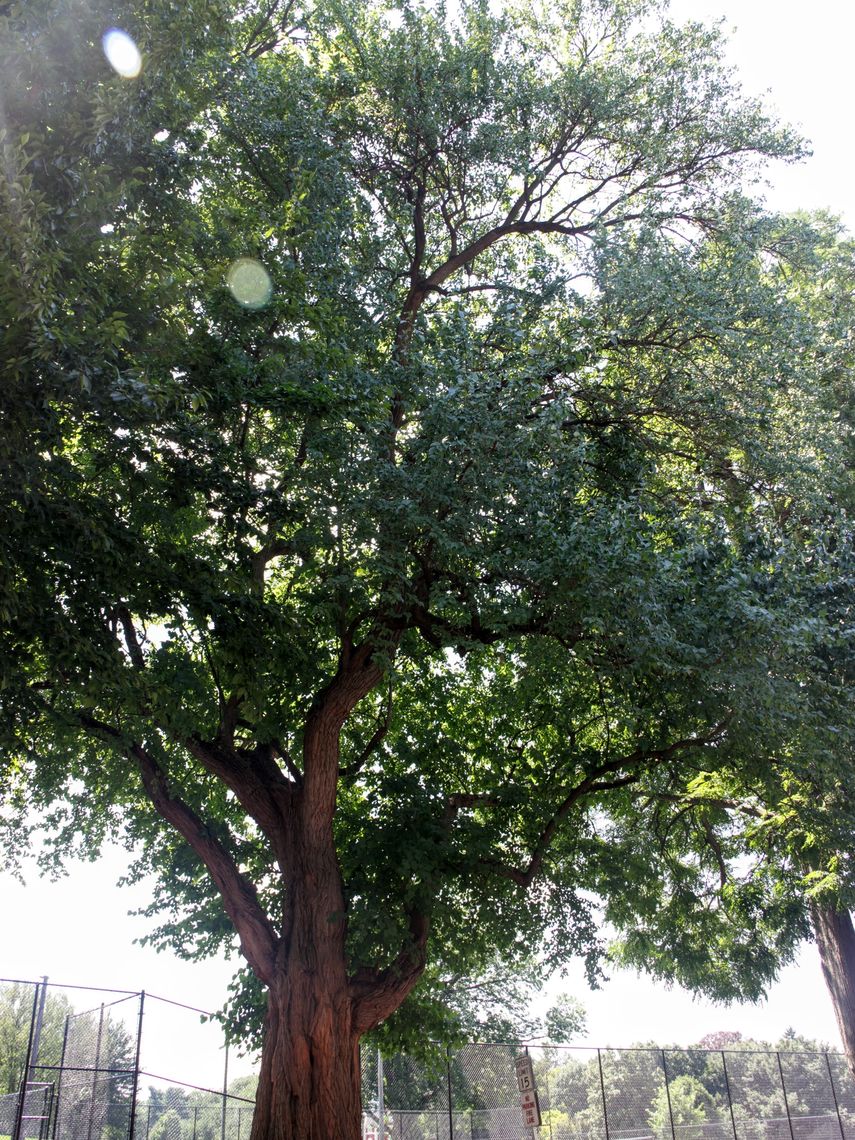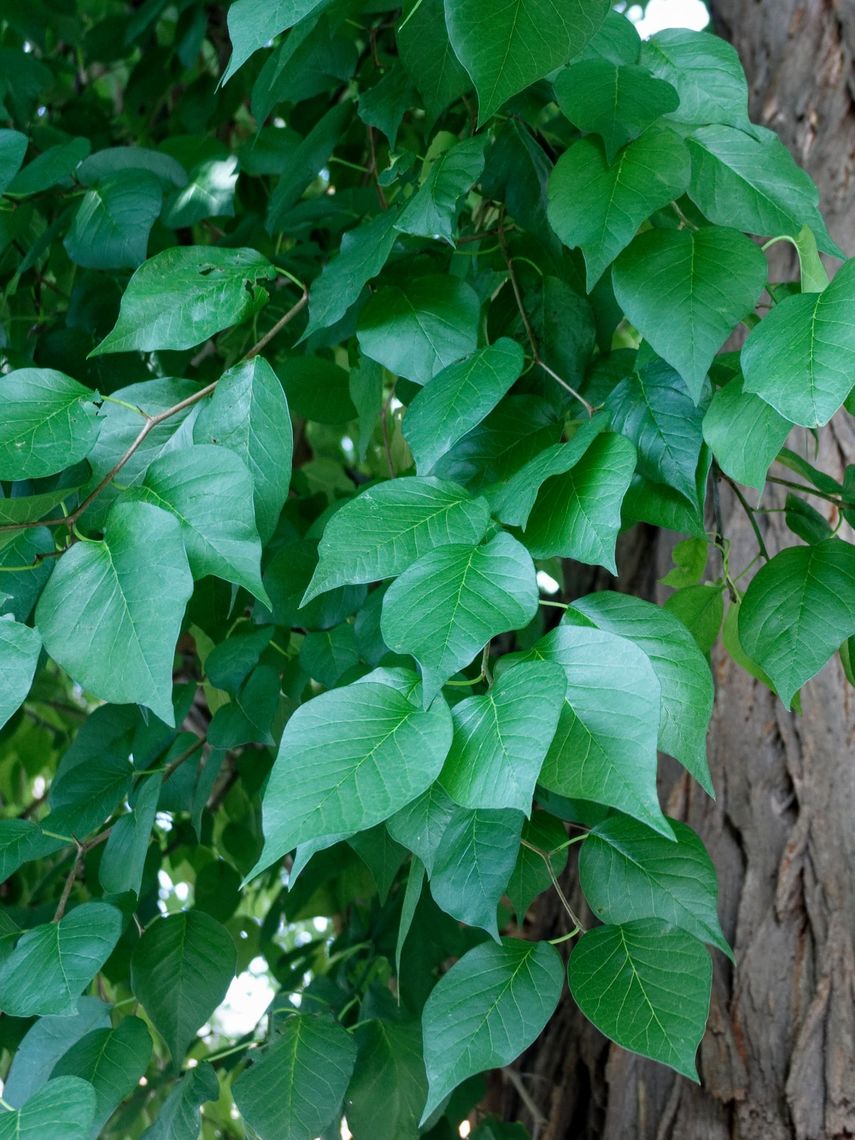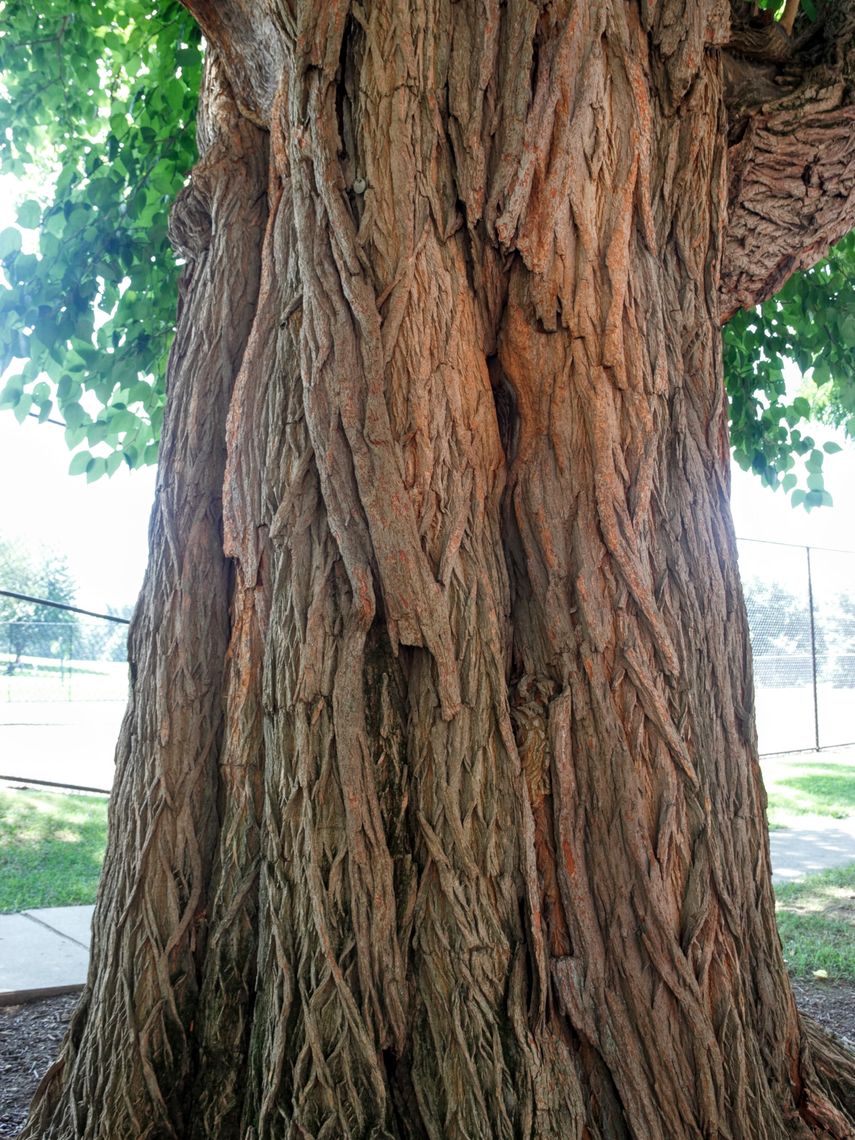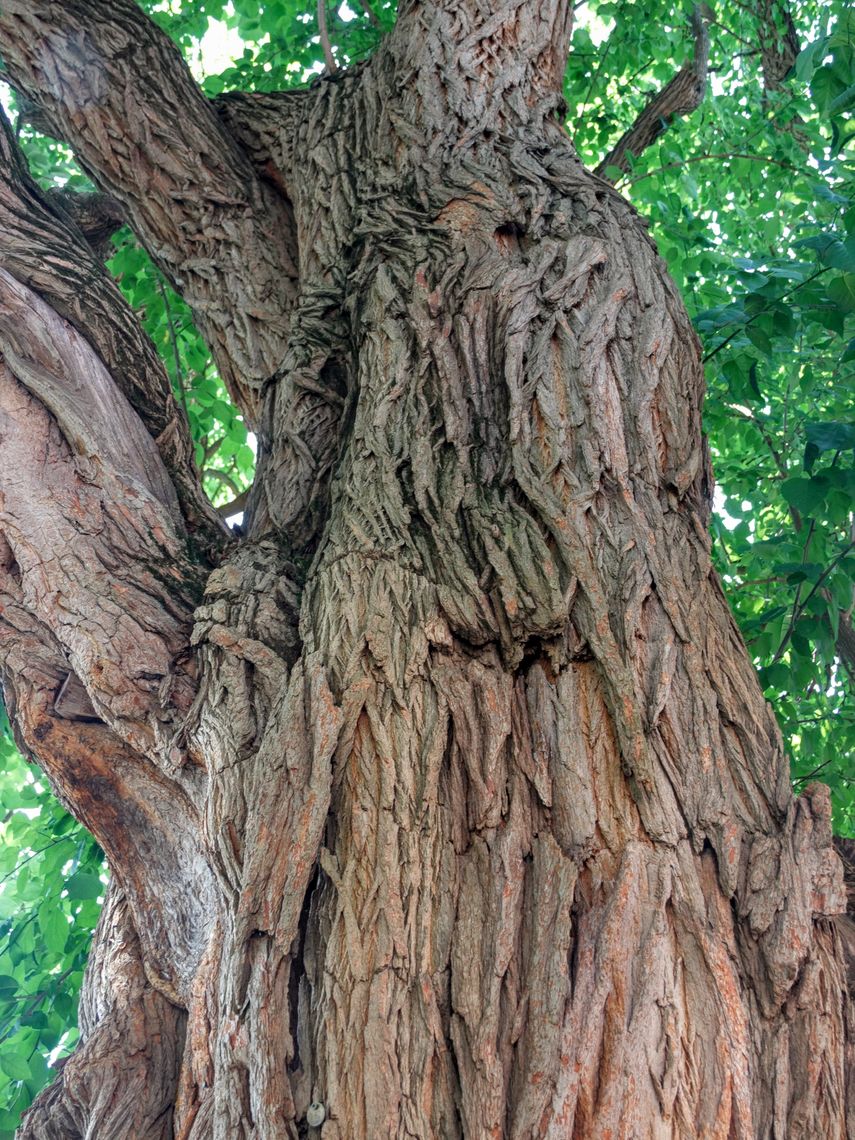Osage Orange (Maclura pomifera)
The osage orange is a medium-sized tree. It is named after 1) its original native range, which overlapped the range of the Native American Osage tribe and 2) its orangish bark, wood, and roots. You will probably first be able to recognize this tree from its grapefruit sized, green, and wrinkled fruits, which often litter the ground surrounding the tree. These fruits are commonly referred to as hedge apples, though are not edible. Though hard to tell, each fruit is actually a cluster of hundreds of small fruits. The tree's bark has a distinct criss-cross pattern. Osage-orange wood is tough and long-lasting and was used by Native Americans to make bows. This tree attracts small mammals.
Family: Moraceae (Mulberry)
Characteristics: The 2-inch to 5-inch-long leaves are egg shaped, glossy, and medium green. In the fall, leaves turn yellow. Male and female flowers appear on separate trees, though are both green and appear in clusters. The female flowers give way to grapefruit-sized, round, wrinkled, green fruits. Bark is gray-brown to orange brown and has a distinct criss-cross pattern. This tree has a rounded shape and a short trunk. Its crown is made up of spiny and interlacing branches. This tree usually grows 20-40 feet high and wide, though can reach up to 60 feet.
Foliage: Deciduous (leaves lost seasonally)
Geographic Origin: North America: Arkansas, Texas, Louisiana, Oklahoma (non-native)
Cultivation Notes: Requires low maintenance. Does best in full sun to part shade. Prefers moist and well drained soils, though is tolerant to a wide range of soil types. This tree is very tough, and is able to thrive in harsh conditions. Female trees need a male tree pollinator in order to produce fruit. Fruit is large, and can be a hazard when falling.
Number on Campus: 1
Sources: Dirr, Morton Arboretum, Missouri Botanical Garden




